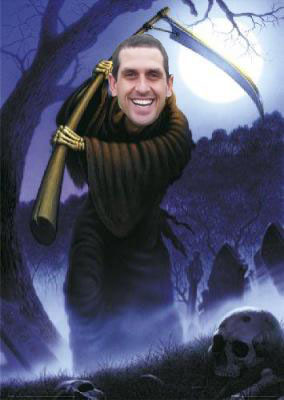A lot of work goes a long way
Hey Folks, sorry it’s been a while since my last post! I’ve been struggling to A) Come up with something really really interesting and B) Find the time! I work at a cycling shop and as you can imagine this is a busy time of year!!
Anyhow I went to Hamilton this past weekend to do the Bay and Back 5k. Now this is tough to tell people because they say oh wow that’s a long way to go for a 5k, yes well i’m working up to 30 okay, I plan to do one in 2050 when I have lost my sanity. I have nothing against long races like half’s, 30 k or marathons I admire your patience but some of the folks that do these long races need to try and understand short races through my eyes, it can be very challenging!
For instance have you ever opened up a race with a 2:48 first km? That can really make it challenging to do another 4 afterward. Yes this really is what happened, let me go back and describe the lead up to the race.
Over the winter I did a lot of cross country skiing, running, and some spinning. Most exercise sessions were a good hour to 3 hours long and really when I exercise by myself I can get carried away and I work pretty hard but at least I work hard for a long time so I work my base. Thank god for these long workouts because that’s what saved me in the second half of that race, I was strong enough to power through a fast opening pace and hang on!
Obviously because this is a speed blog I also need to tell you the importance of my speed work. I did probably 8 to 10 good solid sessions on the indoor track this winter, a fleury of different intervals ranging from 200m to 2000m all of which played an important factor in my fitness for this first race of the spring/summer season.
I’ve always done a really good race imitating workout 10 days out from an important race, now I felt this race was important since it would set the tone for the season so 10 days prior to this past sunday I hit the track for a 5km interval workout. I opened the workout with a 1 km to set the tone and then move into 2 km interval working that middle section of a race where you need a strong rhythm. After about 3km whether it’s mental or physical you tend to lose that rhythm so did an 800m focusing on staying strong and trying to run around or faster than my race pace. The final km or so is always wild and that’s where speed endurance kicks in and you need to be sharp and ready to make a move so I finished the workout with 3x 400m. I did this workout on an outdoor track and I had to steeple chase a large snowbank so the times were inaccurate and really all I needed was to make sure I felt like I was working hard!
Anyway the race went superb I was predicting a 15:50 given my workout times and past experiences with the distance. I ended up running 15:02 for 5th place out of 2000 people. A previous teammate of mine took the win with an impressive 14:10. It was a great day and even though I am ecstatic and shocked with the time I now think of how sweet it would be to see 14.xx so my friends I continue on my speedwork journey and I will do my best to keep you posted.
P.s if I had run 15:00 I could have gained free entry to the Ottawa Race Weekend 10k! Dammit!!





 Current Issue
Current Issue Previous Issue
Previous Issue Prior Release
Prior Release
